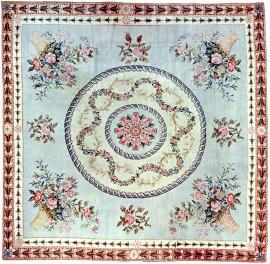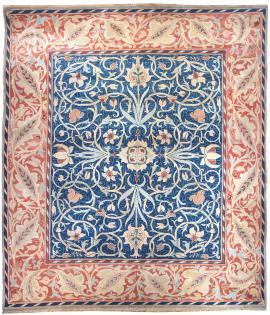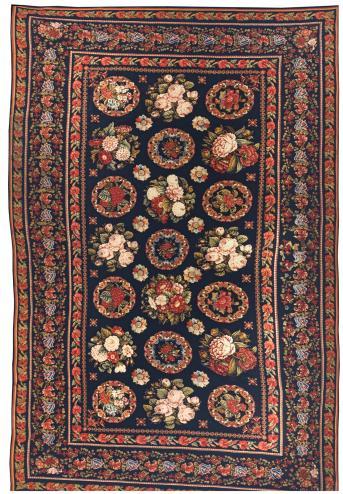England and Ireland
Carpet making in England certainly dates from the 16th century. Paintings and inventories evidence importation of Persian and Turkish carpets and contemporary imitation of these imports. These English adaptations were either produced in needlework or hand knotted and known as Turkeywork. Floor carpets, table carpets and upholstery were all made and this continued through much of the 17th century. In the 18th century a significant industry developed at Axminster, Fulham and Exeter. Whilst Axminster continued the tradition of the Turkey carpets, Fulham was staffed with French weavers who imitated the work of Savonnerie. In the 19th century Wilton and Axminster merged. Carpet design was revolutionized by William Morris and his establishment of a workshop at Hammersmith. This led to artists and designers, such as C F Vosey, producing carpet designs for the newly established Killeybegs factory in county Donegal. After World War I Wilton again became a pre-eminent carpet producer with outstanding Modernist designs commissioned from leading artists.
Needlework Carpet
Price on application
England, Mid 19th Century
16ft 5in height x 10ft 8in width
5.00m x 3.25m
-

George III Axminster Carpet of Lansdowne House Design
Price on application
Woven in the workshops of Thomas Whitty
England, after 1777
14ft 2in length x 13ft 10in width
4.32m x 4.22m
Provenance: Lansdowne House, London -

Carpet by Morris & Co
SOLD
Designed by John Henry Darle (1860 – 1932)
Hammersmith, England, circa 1890
11ft 11in length x 10ft 6in width
3.63m x 3.20m
